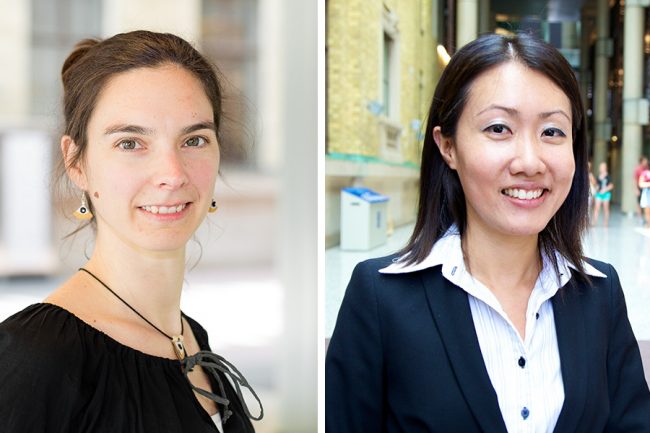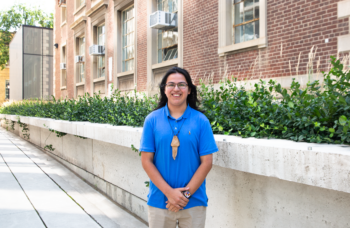Two renewed Canada Research Chairs will catalyze innovations that could reduce the environmental impact of chemical manufacturing and help remediate contaminated sites.
Professor Ya-Huei (Cathy) Chin (ChemE) holds the Canada Research Chair in Advanced Catalysis for Sustainable Chemistry. Professor Elodie Passeport (CivMin, ChemE) is the Canada Research Chair in Environmental Engineering and Stable Isotopes. Both have had their research chairs renewed for another five years.
Chin and her team develop ‘green chemistry’ processes to recover value from materials that might otherwise have been discarded as waste: everything from tree bark to the stalks and leaves of agricultural crops. Through the use of carefully designed catalysts, these materials can be transformed into sustainable fuels or other petrochemical products.
For example, Chin and her collaborators both in academia and industry are currently working on new ways to convert lignin — a chemical found in wood that currently has limited economic value — into green polymers that could replace the fossil fuel-derived versions in use today.
“Our research is multidisciplinary in nature and involves advanced experimental and computational strategies to unravel the fate of a feedstock in the chemical process,” says Chin. “This support will help us discover new reaction pathways by designing and creating catalyst structures that enable more atom- and energy-efficient reactions.”
For her part, Passeport leads a team of researchers focused on understanding the fate of pollutants that do not easily degrade in the environment. One of the key tools used in their work is stable isotopes, which provide an unambiguous signal that can be easily detected in environmental samples.
Using such tools, Passeport and her collaborators can evaluate the effectiveness of environmental remediation strategies, for contaminated groundwater as well as for surface waters, such as constructed wetlands or bioretention cells, which have the potential to speed up the rates at which human-generated chemical degrade.
“Managers of highly contaminated groundwater sites need to know whether or not naturally-occurring microbes are able to break down contaminants, and isotope analysis can provide the evidence of that,” says Passeport.
“For example, we are currently working with experts from both industry and academia at a complex contaminated site in Brazil. We are developing new methods of stable isotope analysis for chloroanilines and chloronitrobenzenes, two of the compounds found there.”



